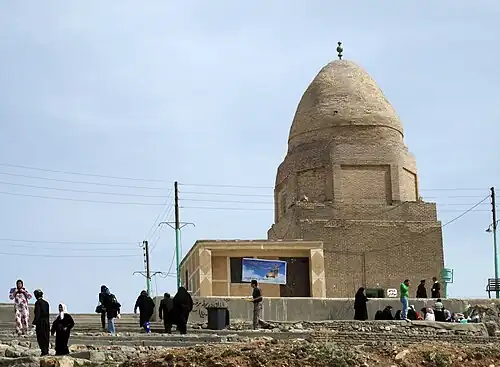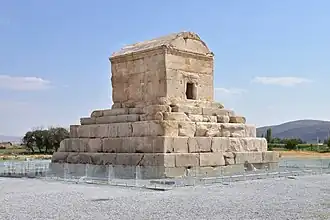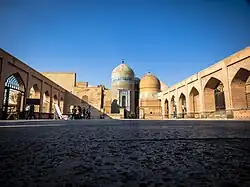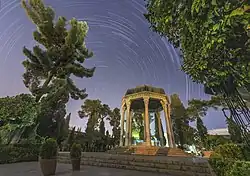Tomb of Wais-e Nāzār
| Tomb of Wais-e Nāzār | |
|---|---|
آرامگاه ویس نازار | |
 The tomb in 2012 | |
| Religion | |
| Affiliation | Sunni Islam |
| Ecclesiastical or organizational status | Mausoleum |
| Status | Active |
| Location | |
| Location | near Kermanshah, Brimavand, Ravansar County, Kermanshah Province |
| Country | Iran |
 Location of the complex in Iran | |
| Geographic coordinates | 34°31′38″N 46°50′57″E / 34.5271293°N 46.8492279°E |
| Architecture | |
| Type | Islamic architecture |
| Style | Seljuk |
| Specifications | |
| Dome(s) | One |
| Materials | Brick |
| Official name | Mausoleum of Veys |
| Type | Built |
| Designated | 1975 |
| Reference no. | 1054 |
| Conservation organization | Cultural Heritage, Handicrafts and Tourism Organization of Iran |
The Tomb of Wais-e Nāzār (Persian: آرامگاه ویس نازار) is a Sunni mausoleum, located near city of Kermanshah, in the province of Kermanshah, Iran.[1] It is located on the top of a hill, 35 kilometres (22 mi) from the city of Ravansar.[1] The deceased person entombed in the mausoleum is traditionally attributed to be Owais al-Qarani, one of the Tabi'een who died in the Battle of Siffin.[1] The building was added to the Iran National Heritage List in 1975, administered by the Cultural Heritage, Handicrafts and Tourism Organization of Iran.[1]
History
The mausoleum was first constructed during the Seljuk period. In the 21st century, the mausoleum was completely refurbished and renovated. A Hussainiyah was attached to the tomb, and other facilities like a bazaar and a skydiving center were built in the areas adjacent to the tomb.[2] In 1954, the mausoleum was designated as a national heritage monument.[2]
As of 2023, the tomb was predominantly visited by Iranian Kurds, who are usually Sunnis.[2]
The identity of the entombed
The geographer, Hamdallah Mustawfi, wrote that the grave of Owais al-Qarani was located near Kermanshah after he died in the Battle of Siffin.[2] But due to Owais also having a tomb attributed to him in Raqqa, Syria within the grounds of the now-destroyed Uwais al-Qarni Mosque, the identity of the entombed here is contested.[1][2] An alternative theory suggests that the mausoleum was built for one of the mystics of the Uwaisi Sufi order, who had a very similar name.[1]



